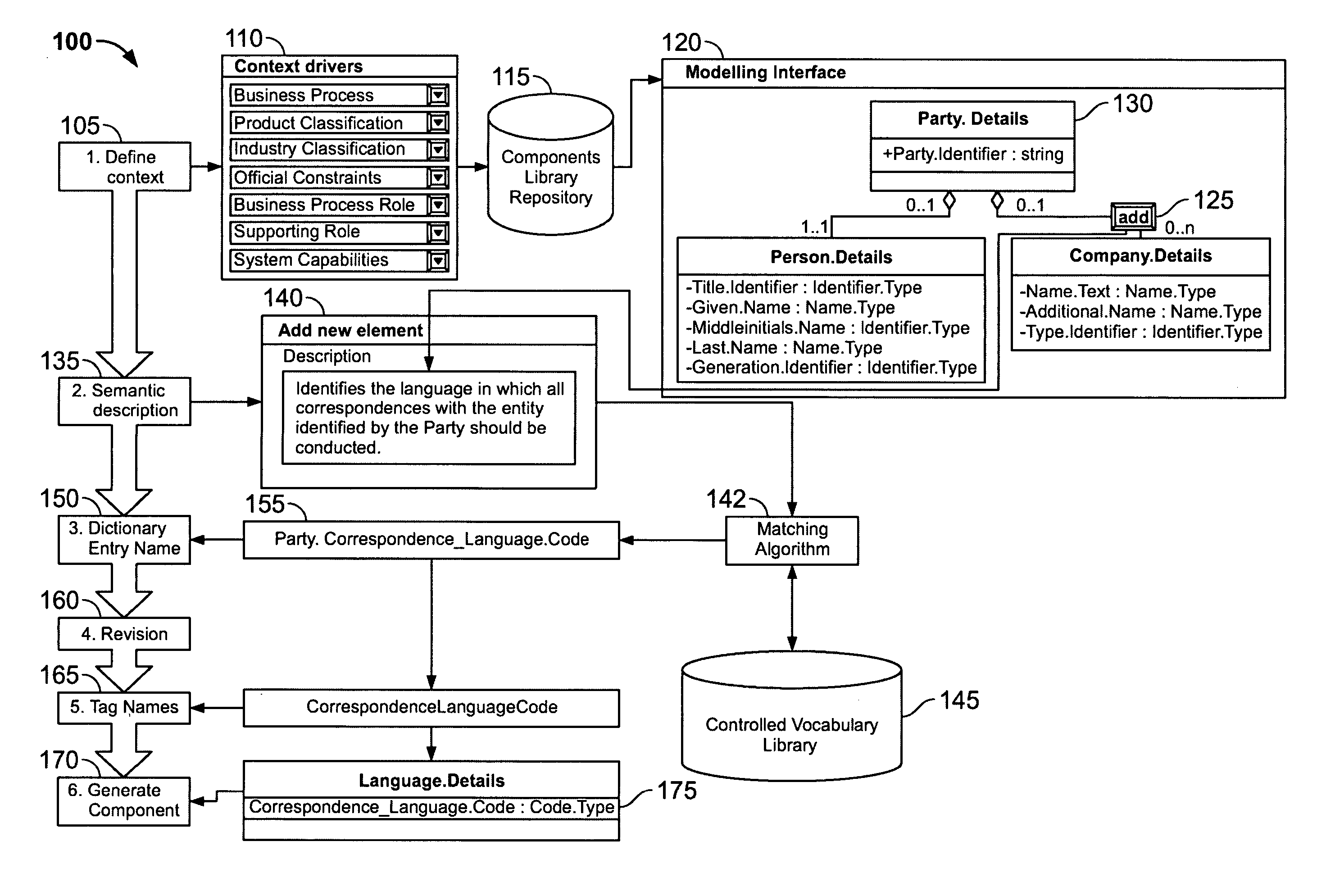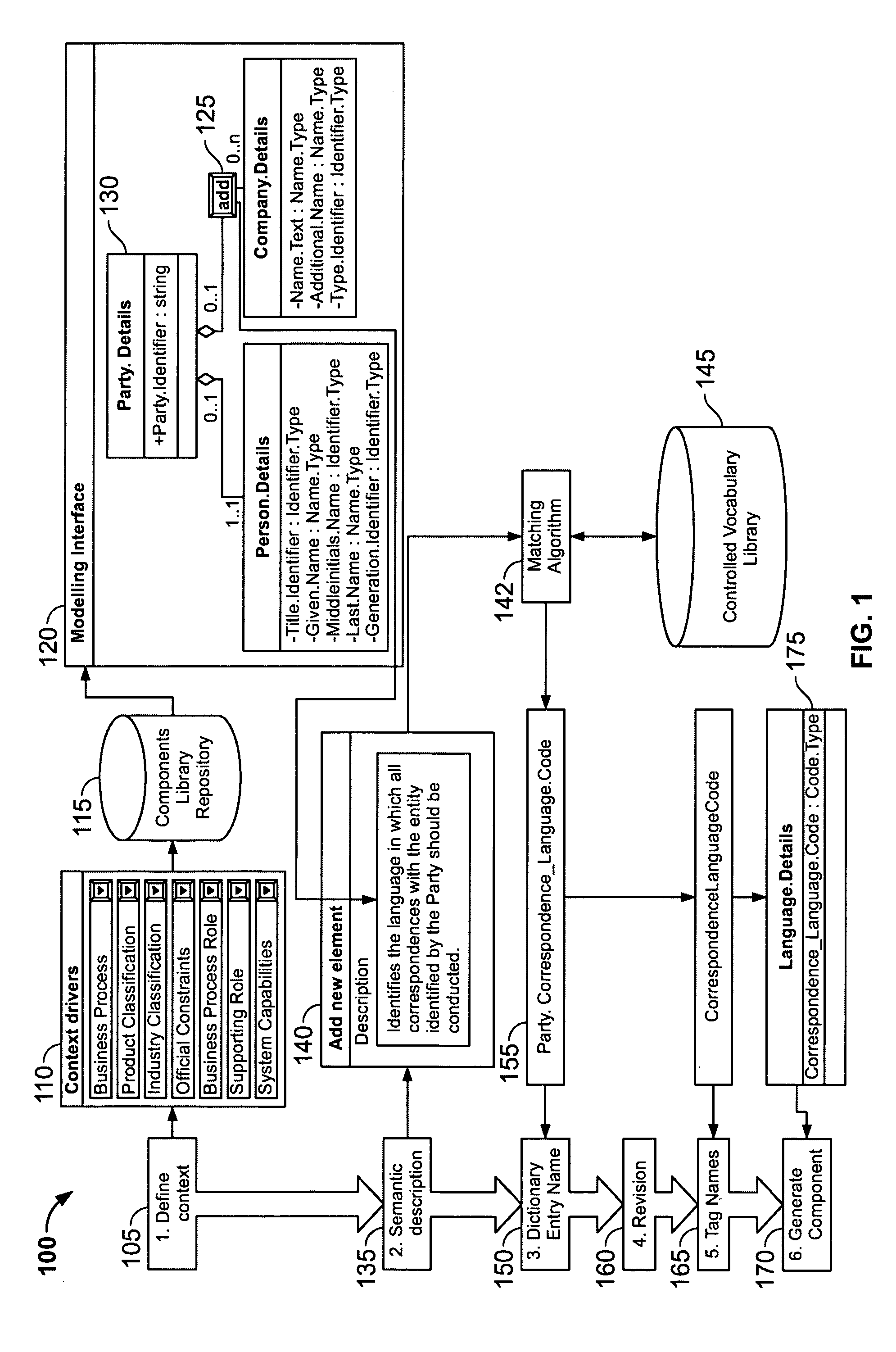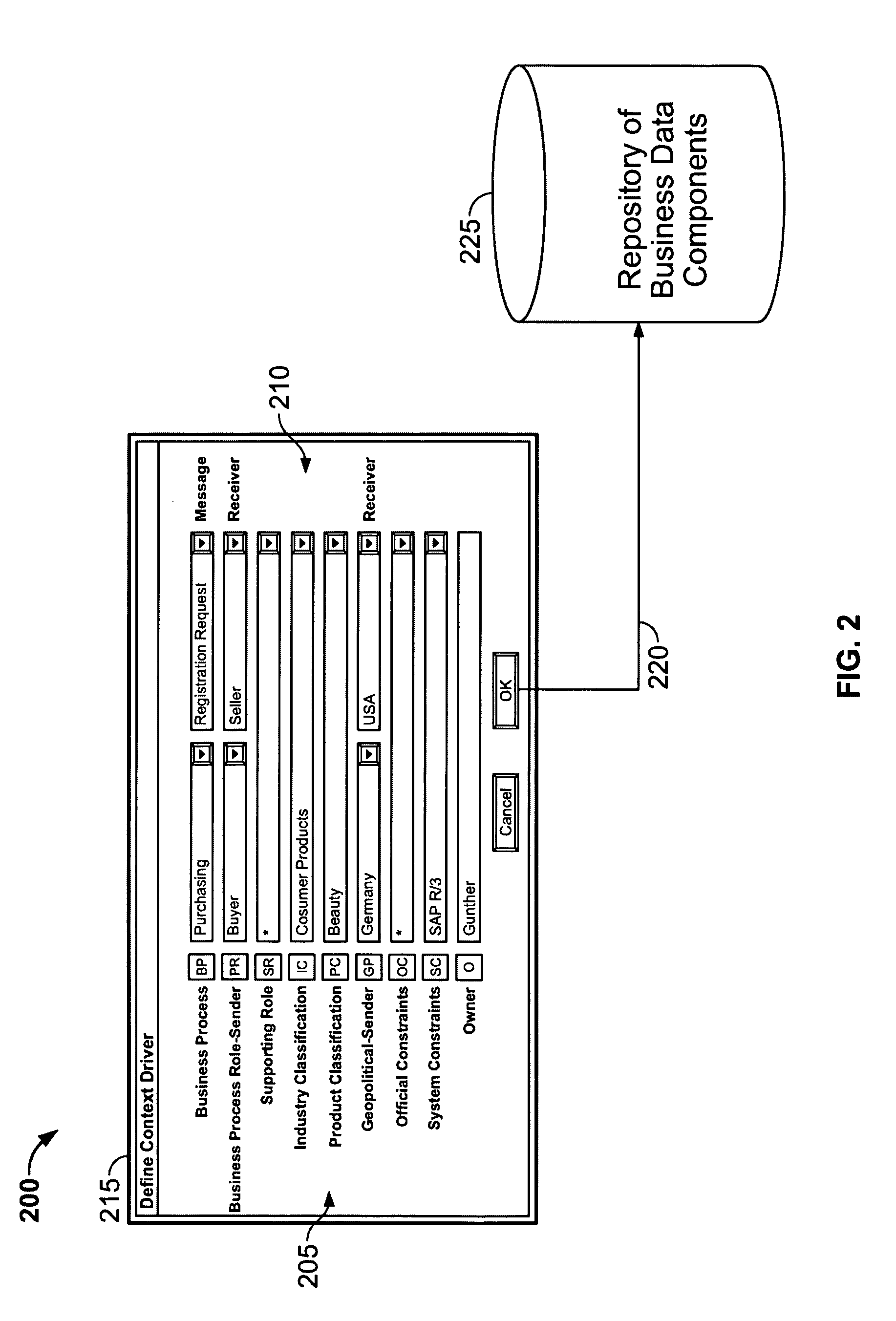Using a controlled vocabulary library to generate business data component names
- Summary
- Abstract
- Description
- Claims
- Application Information
AI Technical Summary
Benefits of technology
Problems solved by technology
Method used
Image
Examples
Embodiment Construction
[0022] In general, electronic business communications can be conducted using electronic documents. An electronic document does not necessarily correspond to a file. A document may be stored in a portion of a file that holds other documents, in a single file dedicated to the document in question, or in multiple coordinated files. Electronic documents can be constructed using business information entities. A business information entity (BIE) is an element of business data or a collection of business data with a unique business semantic definition and can include a Basic Business Information Entity (BBIE), an Association Business Information Entity (ASBIE), or an Aggregate Business Information Entity (ABIE). A BBIE represents a characteristic (e.g., a street address) of a specific object class in a specific business context and corresponds to a data type that describes valid values for the BBIE. An ASBIE represents a complex characteristic of a specific object class in a specific busin...
PUM
 Login to View More
Login to View More Abstract
Description
Claims
Application Information
 Login to View More
Login to View More - R&D
- Intellectual Property
- Life Sciences
- Materials
- Tech Scout
- Unparalleled Data Quality
- Higher Quality Content
- 60% Fewer Hallucinations
Browse by: Latest US Patents, China's latest patents, Technical Efficacy Thesaurus, Application Domain, Technology Topic, Popular Technical Reports.
© 2025 PatSnap. All rights reserved.Legal|Privacy policy|Modern Slavery Act Transparency Statement|Sitemap|About US| Contact US: help@patsnap.com



